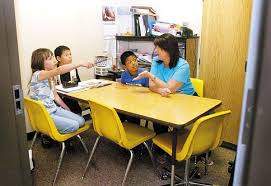 A group leader recently shared with me his understanding of Sunday School. His overarching terms were worship, community, and evangelism. With his spiritual gifts of teaching and leadership, he felt most effective in teaching and fellowship. As we talked more, he shared natural, organic efforts by his group at outreach. His groups tended to grow during the course of the year.
A group leader recently shared with me his understanding of Sunday School. His overarching terms were worship, community, and evangelism. With his spiritual gifts of teaching and leadership, he felt most effective in teaching and fellowship. As we talked more, he shared natural, organic efforts by his group at outreach. His groups tended to grow during the course of the year.
Groups are composed of and led by people who have differing personalities, experiences, abilities, passions, and gifts. Sometimes group members shape the focus or primary purpose of their group. Often leaders do so. I often hear teaching mentioned as the primary purpose. Occasionally I hear fellowship and ministry mentioned. Rarely I hear outreach and evangelism mentioned.
There is nothing wrong with admitting a preference for one purpose and doing it well. But group growth can settle for nothing less than work done on three purposes: reaching, teaching, and caring (or mission, formation, and connection as shared by David Francis and Rick Howerton in Countdown.)
Without reaching, there will be no group to teach. Without care (ministry, fellowship, connection), the group will leak out, and there will be no group left to teach. Without good teaching, our outreach and care will not keep them coming back. Which can we neglect without suffering the consequences? None!
In a tiny group (2 or 3 people), one person may need to lead in all three purposes. But as a group grows beyond tiny, there will usually be members whose gifts, personalities, and passions equip them to be able to serve to lead one of these three purposes for the class. But someone must prayerfully enlist them!
When a teacher has someone leading the group in outreach and member care, he or she is like Moses leading Israel to fight Amelek in Exodus 17. When Aaron and Hur held up his arms, they were able to win the battle. The teacher can focus on his/her primary purpose of teaching, while the outreach leader focuses on his/her primary purpose of outreach and the member care leader focuses on his/her primary purpose of member care. With three champions, all three purposes can be carried out well.
It is difficult (or impossible) alone to do everything. But with balance and teamwork, growth is natural. Make sure the purposes are given to someone who can make them their focus. Then ask them to help you lead the class to accomplish them all!
